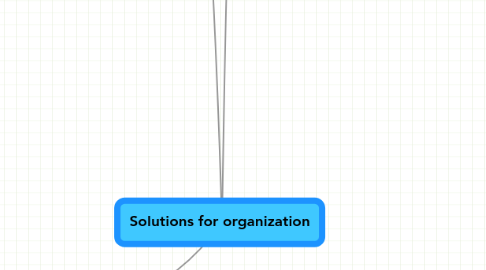
1. What problems it solves?
1.1. Organizational problems
1.1.1. It happens because there is something wrong in the information
1.1.2. Information needed to assist people in making decisions,performing functions may be absent, wrong, takes to produce, cannot be used
1.2. Information- based Problems
1.2.1. understanding of the Life Cycle of Information
1.2.1.1. Problems in Data Storage
1.2.1.2. Problems in Data Capture
1.2.1.3. Problems in Data Processing
1.2.1.4. Problems in Information Disrtibution
1.2.1.5. Problems in Information Presentation
1.2.2. Qualities of Good Information
1.2.2.1. Complete
1.2.2.1.1. Covers all the needed information and data that the company needs
1.2.2.2. Accurate
1.2.2.2.1. All given data and information are true to life or error free
1.2.2.3. Accesible
1.2.2.3.1. It is easy enough for the user to use or retrieve the information available to them
1.2.2.4. Secure
1.2.2.4.1. It is able to protect the files and date created and generated by the company
1.2.2.5. Reliable
1.2.2.5.1. Information given can be depended on by the users to make decisions
1.2.2.6. Flexible
1.2.2.6.1. The information given can be turned around and be used to solve other problems of the company
1.2.2.7. Verifiable
1.2.2.7.1. It can be compared to the real- time date and turn out to be accurate
1.2.2.8. Relevant
1.2.2.8.1. Information generated from the data gathered makes sense and can be applied to the company
1.2.2.9. Economical
1.2.2.9.1. It can generate profit through its efficiency
1.2.2.10. Timely
1.2.2.10.1. it can create good effects to the company in the long run
2. What is an organization?
2.1. Structured
2.1.1. composed of many branches that function together to create balance in an organization
2.2. Group of people
2.2.1. consists of many people that pursues issues and pro
2.3. Common purpose
2.3.1. its purpose is to represent a specific problem or need in society
2.4. Roles and Functions
2.4.1. these are set to cater a certain need of the public
2.5. Processed Procedures
2.5.1. Assures the smooth operation of an organization
3. How do you detect these problems
3.1. Understanding the current situation
3.1.1. It is when you compare the current situation with what should normally be happening that you can understand if something is a problem or not
3.2. Understanding what should happen
3.2.1. Management functions
3.2.1.1. Planning
3.2.1.1.1. Establishing goals and objectives. Includes deciding on strategies and tactics needed to meet the goals and objectives that were set.
3.2.1.2. Leading
3.2.1.2.1. Also referred to as directing. Involves communicating instructions and authorizing others to perform the needed work Controlling
3.2.1.3. Organizing
3.2.1.3.1. Identifying and combining of resources(money, people) to reach the companies goals and objectives. Also involves the management structure of a company(departments, reporting realtionship
3.2.1.4. Controlling
3.2.1.4.1. Requires regular monitoring through reports
3.2.2. Business Processes
3.2.2.1. Sales
3.2.2.1.1. Responsible for selling the company’s products and services
3.2.2.2. Marketing
3.2.2.2.1. Responsible for researching the market to determine the products and features that the business should develop
3.2.2.3. Production
3.2.2.3.1. Responsible for creating the finished product
3.2.2.4. Product Development
3.2.2.4.1. Responsible for designing and testing prototype products
3.2.2.5. Customer Service
3.2.2.5.1. Responsible for maintaining a relationship with a customer and after a sale has been made.
3.2.2.6. Finance and Accounting
3.2.2.6.1. Responsible for managing the business money
3.2.2.7. Distribution
3.2.2.7.1. Responsible for the delivery of the products of outsourcing of products
3.2.2.8. Human Resources
3.2.2.8.1. Responsible for recruiting, promoting, training, evaluating employees.
3.2.2.9. Invetory & Purchaseing
3.2.2.9.1. Responsible for keeping track of purchased products and stored products in the ware house
3.2.3. Levels of Management
3.2.3.1. Executive Management
3.2.3.1.1. Highest management positions, Focuses on the long- range direction of the company, Responsible for strategic decisions for company’s overall goals and objectives, Oversees middle management
3.2.3.2. Tactical Management
3.2.3.2.1. covers the implementation of strategic decisions made by the executive management, makes tactical decisions, decisions that are short- ranged, oversees operational management
3.2.3.3. Operational Management
3.2.3.3.1. supervises non- management employees, makes operational decisions, operational decisions involves day- to- day activities within the company, supports tactical decisions made by the middle management(tactical management)
